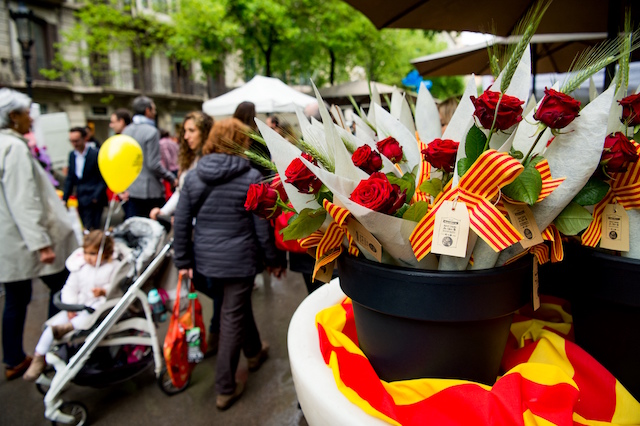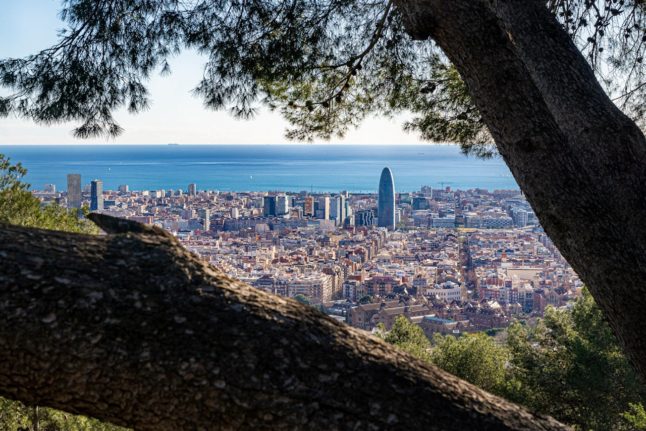Every April 23rd on the day of Sant Jordi, or St George, people in the northeastern region give each other a rose or a book in a celebration of their patron saint, love and culture.
Originally the tradition involved men giving their love a rose, while she in return would give him a book. But it has evolved, and today women also receive books, and flowers are given as well to mothers, daughters, friends and even co-workers.
The region marks the day by setting up book and flower stands in the Catalan capital of Barcelona, as well as towns across Catalonia.
Roses are typically sold wrapped in yellow and red paper, like the Senyera (Catalan flag) and paired with a sheaf of wheat. Sometimes hearts or small dragon figurines are also attached.
Bakeries sell special pa de Sant Jordi (red and yellow striped bread) and colourful tarts decorated with roses, musicians perform in the streets of Barcelona, and authors sign copies of their books.
Why books?
April 23rd also coincides with UNESCO’s World Book Day, as it celebrates the anniversary of the deaths of William Shakespeare and famed Spanish author of Don Quixote, Miguel de Cervantes.
On average retailers sell around six million roses, and over 1.5 million books on the day just in Catalonia, which is home to 7.5 million people.
Catalan booksellers make between 5-8 percent of their annual sales on the day of Sant Jordi and one in every three books bought in Catalonia is sold on this day, according to the Catalan booksellers association. The majority of the books sold are in the Catalan language.
Since 1931 a book fair has been held in Barcelona on April 23rd – St George’s Day.
Since then, the tradition of offering books and roses in Catalonia has thrived, even during the 1939-74 dictatorship of General Francisco Franco when the open sale of books in the Catalan language was banned.
READ ALSO: Ten books that tell you everything you need to know about Spain

Dragon slayer
Catalonia adopted St George as its patron saint in the 15th century, the same patron saint as England, Georgia, Genoa in Italy, and many other places around the world.
According to legend, he saved a princess from a dragon, by stabbing it with his spear while riding on a white horse. Where the dragon’s blood spilt, a rosebush grew in its place and Sant Jordi offered one of its roses to the princess.




 Please whitelist us to continue reading.
Please whitelist us to continue reading.